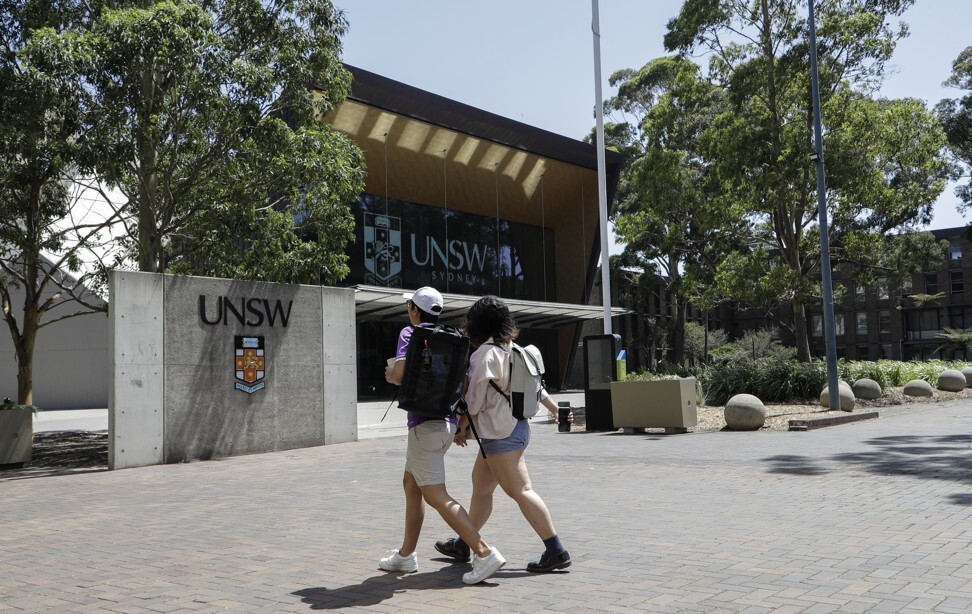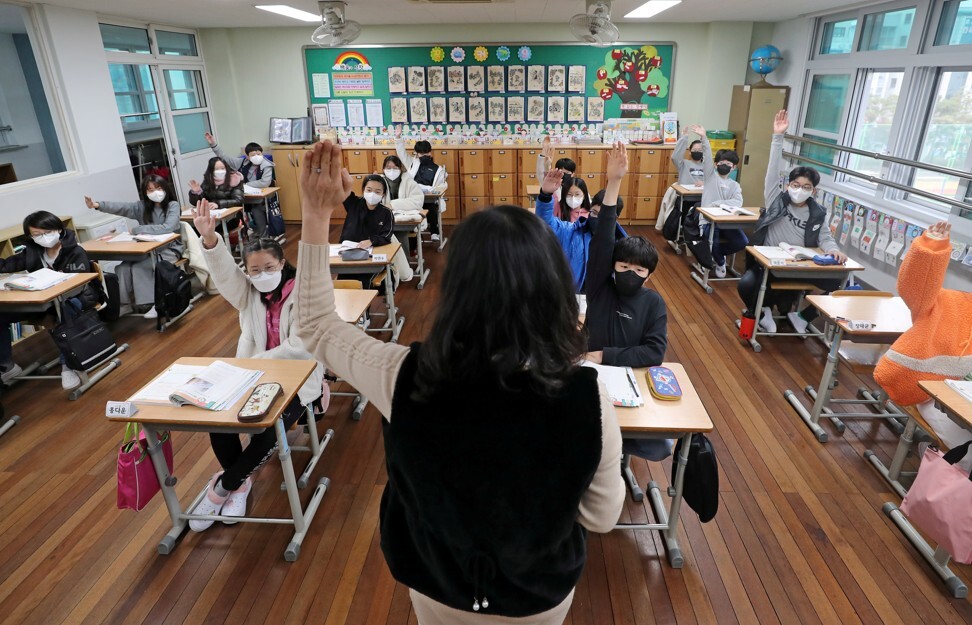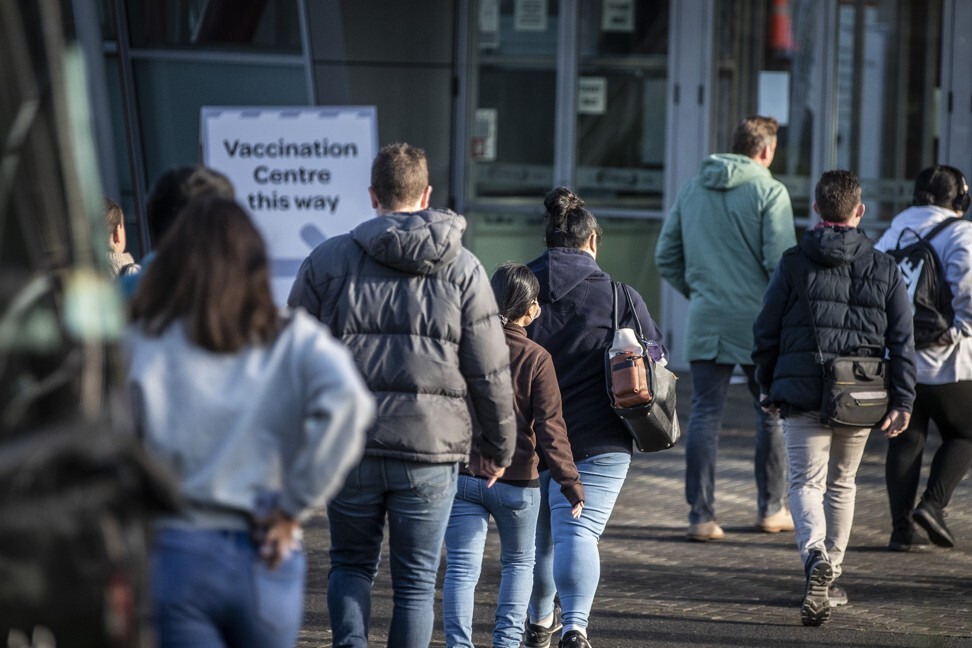
Coronavirus: Australia reopening to skilled workers, Japanese and South Koreans
- From December 1, some people holding Australian visas, as well as Japanese and South Korean citizens, will be able to enter the country
- Elsewhere, South Korea is resuming in-class lessons, while New Zealand will end its lockdown for Auckland early next month
Australia on Monday said it would again welcome foreign students and skilled workers from next month, easing some of the world’s most stringent pandemic travel restrictions.
Twenty months after Australia slammed shut its borders, some visa-holders – as well as Japanese and South Korean citizens – will be able to enter from December 1.
“Australia is reopening to the world,” said Home Affairs Minister Karen Andrews as she announced the news, adding it was “yet another step forward for Australia”.
Singapore students start returning to Australia as travel lane opens
The government of Prime Minister Scott Morrison lifted restrictions on Australians travelling overseas last month, sparking a flood of travel bookings for the southern hemisphere summer.
But Morrison – who is hoping to be re-elected next year – had pointedly refused to relax travel rules for non-Australians.
That move left an estimated 1.4 million skilled visa-holders stuck in Australia, unable to return if they decided to leave.
Business groups had lobbied hard for vaccinated visa-holders to be allowed to return, as they struggle to fill jobs and gird for the beginning of a third year of restrictions.
Among those most vocal in calling for rules to be further relaxed was the beleaguered university sector.
According to Universities Australia, an industry group, 130,000 international students remain outside the country.
There had been fears that many Asian students would opt to study in person in the United States or Europe rather than pay for online courses based in Australia.
There is no word yet on when leisure travellers may be able to return to Australia, a blow to the equally hard-hit tourism sector, which has seen visitor numbers virtually evaporate since borders were closed in March 2020.
While some Australian states still require quarantine, vaccinated Australians, some visa-holders and citizens of Japan, South Korea and Singapore will now be able to visit Australia with only a pre-departure negative Covid-19 test.
Singapore says return to strict curbs a ‘last resort’
Ong also said the international travel and tourism hub would continue to open “travel lanes” with more countries for vaccinated visitors.
Singapore is gradually granting small groups of vaccinated people increased liberties, resuming in-person business events and permitting quarantine-free travel from select countries as it ramps up its vaccine booster programme.
“It’s important to do it this way because it minimises the chance of us having to back-pedal too frequently,” Ong said in a Reuters interview on Monday. “You can’t rule out having to throttle back sometimes, but it should always be a last resort, because it’s extremely frustrating for people.”
Singapore to ease dine-in, social rules as Covid-19 cases fall
Singapore has vacillated between tightening and easing restrictions for its population of 5.45 million in recent months as, like many countries, it was hit by a fresh wave of infections fuelled by the Delta variant.
Ong said it was too difficult to put a time frame on when Singapore would reach a “new normal”, but he hoped the country’s high vaccination rates and the current roll-out of booster shots meant it would continue to ease restrictions.
“I hope that whatever liberty that we now gradually, progressively can return back to the people, we can keep them for next year, even as a new wave arrives,” Ong said.

Singapore has been expanding quarantine free travel from more than a dozen countries, including Britain, France, Germany, Australia, Canada and the US via so-called vaccinated “travel lanes”.
It will start these lanes with Malaysia and India at the end of the month. The lanes allow fully vaccinated people to enter the island without quarantining if they pass their Covid-19 tests.
“It is important for us to establish this, as such a small outwardly oriented country, we need to connect with the world,” said Ong. “For the foreseeable future, I think vaccinated travel lanes will be the norm.”
South Korean schools resume full in-person classes
For the first time since South Korea began battling its coronavirus outbreak in early 2020, all schools across the country resumed full-time in-person classes on Monday.
As the first country outside China to face a major outbreak of the virus, South Korea’s schools have seen various stages of shutdowns, remote learning, and hybrid arrangements.
Widespread testing, intensive contact tracing and tracking apps have enabled South Korea to limit the spread of the virus without the extensive lockdowns seen in other countries, but previous efforts at fully opening schools have been hampered by new waves of infections.
What it’s like to use Singapore’s vaccinated travel lane with South Korea
The fully reopened schools come as part of South Korea’s “living with Covid-19” plan, adopted after it reached its vaccination goals last month. Overall, 78.8 per cent of the population is fully vaccinated, though that number drops to 12.8 per cent for those ages 12-17.
“It is true that many concerns remain,” South Korean education minister Yoo Eun-hye said during a visit to an primary school in Seoul on Monday.
Even as it eased social distancing amid high vaccination rates, the country has battled some of the highest daily case numbers yet, including a record number of severe cases.

South Korea reported 2,827 new Covid-19 cases as of midnight Sunday, down slightly from nearly a week of daily totals over 3,000, including a record high 3,292 new cases on Thursday.
Most worrisome for health officials is an uptick in serious cases requiring hospitalisation, which have lingered near record highs of more than 500.
Schools still can move back to remote learning or other hybrid arrangements if the coronavirus situation requires it. Precautions such as masks, dividers and other distancing measures remain in place.
“As the number of new confirmed cases increase, we ask parents and family members to pay extra attention to prevention measures,” Yoo said. “The education ministry and education offices will thoroughly check the prevention measures and will support areas in need.”

New Zealand to begin traffic light system
New Zealand will end a three-and-a-half-month lockdown in the country’s largest city Auckland early next month as it adopts a new coronavirus control strategy, Prime Minister Jacinda Ardern said on Monday.
Ardern said that from 11.59pm on December 2, New Zealand will adopt a new Covid-19 response – first flagged last month – that aims to contain the highly contagious Delta variant, rather than attempting to eliminate it completely.
“The hard truth is that Delta is here and not going away,” she said. “While no country has been able to eliminate Delta completely, New Zealand is better positioned than most to tackle it.”
Ardern’s coronavirus response until now has strived for “Covid-Zero” elimination, with strict lockdowns, rigorous contact tracing and tight border controls.
While it has resulted in just 40 deaths in a population of 5 million, pressure had been building to end a lockdown in Auckland imposed in mid-August when Delta was first detected.
Ardern had initially planned to implement the new system when the vaccination rate in the country reached 90 per cent, but set the December 2 opening-up date even though the level is currently around 83 per cent.

Director-General of Health Ashley Bloomfield said he was comfortable with what amounts to the largest revamp of Covid-19 policy since the start of the pandemic.
“We’re going into this next phase in, one could argue, the best possible position,” he said. “We’ve got a controlled outbreak, we’re going into summer and we’ve got high and increasing vaccination rates.”
How the world is getting tough on unvaccinated people
Under the new three-tier traffic light system, green has almost no virus controls, while red means businesses can remain open but customers must be vaccinated and observe social distancing.
“The key difference between the two systems is that vaccine passes will shortly be required at places like bars, gyms and restaurants,” Ardern said.
She said Auckland would initially be placed under the red setting and officials were still determining how to classify other areas.
Auckland is currently sealed off from the rest of New Zealand, with roadblocks due to be removed on December 15.
Stringent quarantine rules for international arrivals will remain in place but Ardern has committed to easing them early next year.
Reporting by Reuters, AFP




